What’s the Difference Between Crocodiles and Alligators?
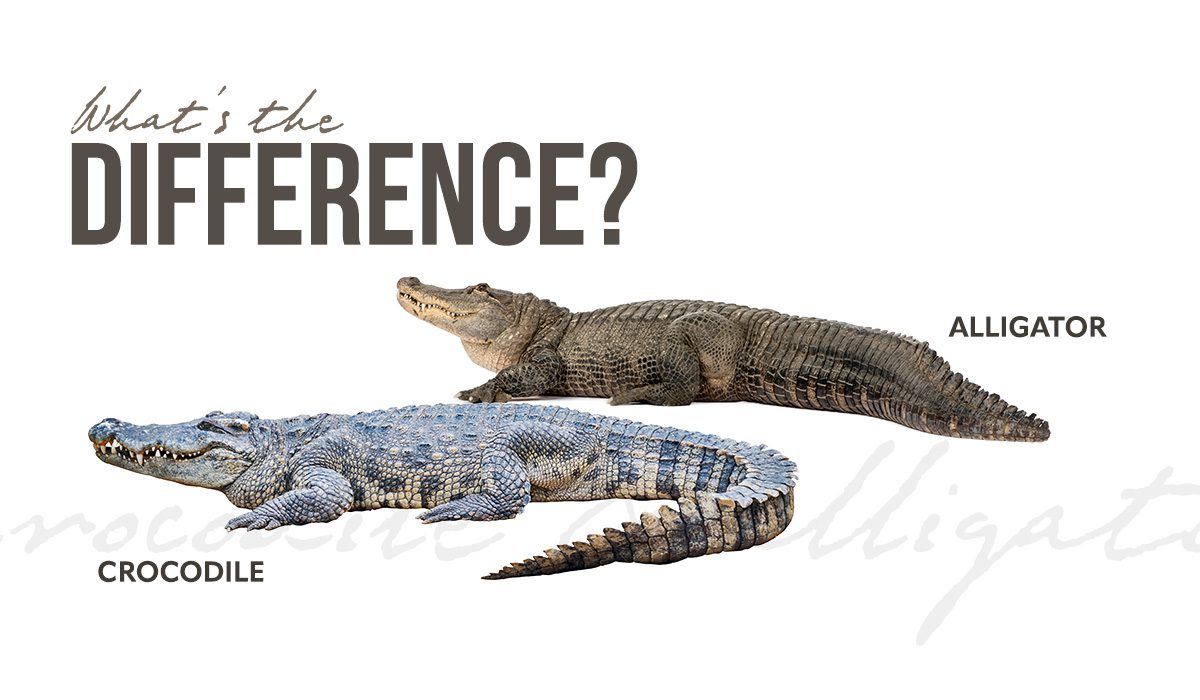
Snapping snouts, scaly skin and cold-blooded bodies: crocodiles and alligators have a lot in common. They’re more closely related to birds than they are to other reptiles, and they count among the closest living relatives to dinosaurs on the planet. Indeed, these “living fossils” have hardly changed over the eons.
It can be tough to tell the difference between the two crocodilians. Thankfully, we know some easy ways to tell who’s who.
Location
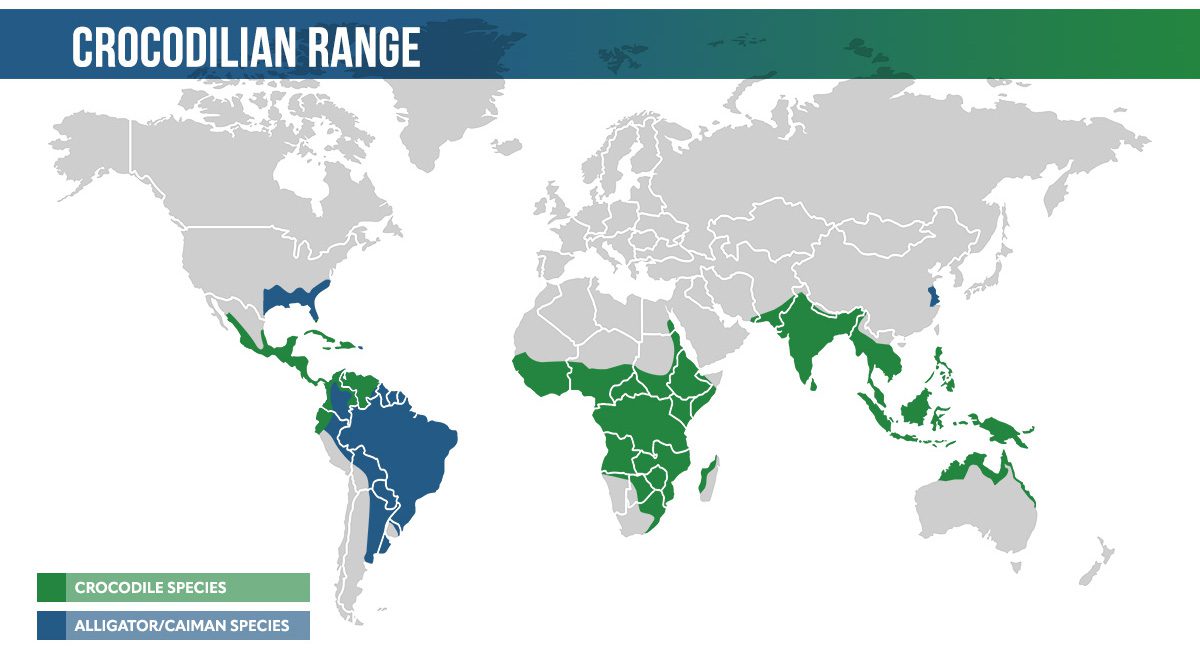
If you’re on a Tanzanian safari and you spot a long snout sticking out of the waters, you know it’s a crocodile! Nile crocodiles are widespread across Africa. Crocodile species are widespread on other continents too: Asia, Australia, the Americas and Australia.
Some reports indicate that over 600,000 Nile crocodiles live in Africa. An estimated 50% of them can be spotted in Tanzania, especially when they start looking for tasty wildebeest snacks during Serengeti river crossings.
Alligators, on the other hand, are found throughout the American southeast, South America and eastern China.
But how do you actually tell the two apart?
Snout and Jaw
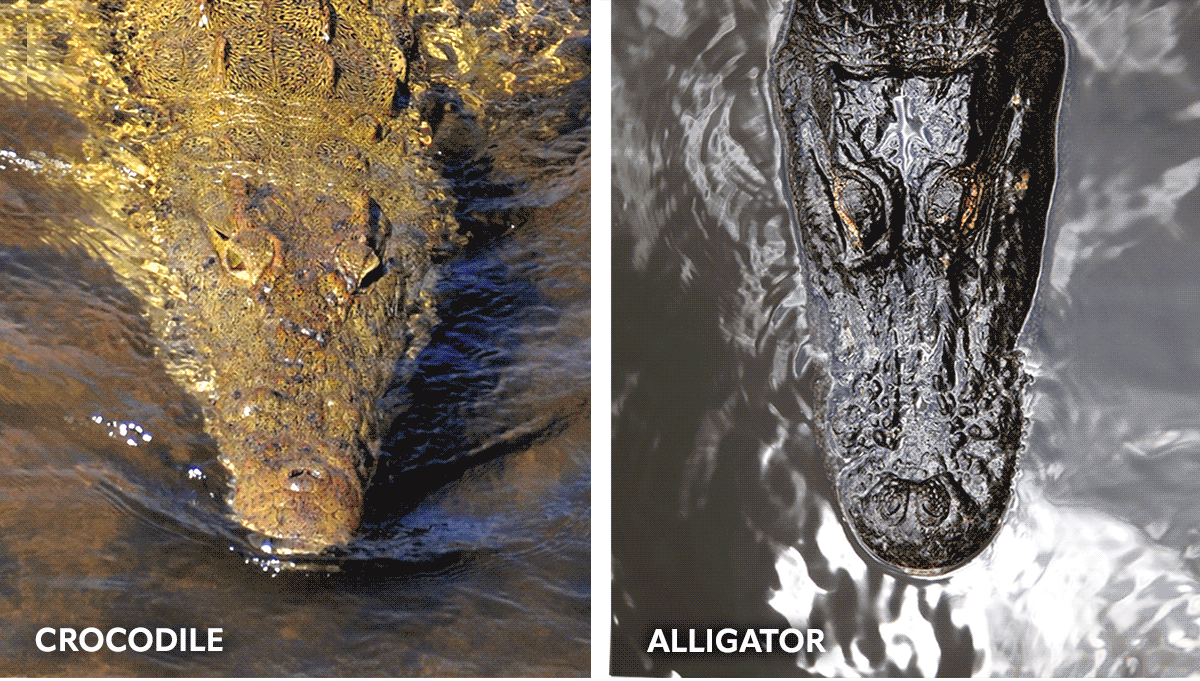
The fastest way to tell the difference between crocodilian species is to examine the shape of their faces. Crocodiles always have a triangular snout in the shape of the letter V. Alligators snouts are rounder, always in a U-shape.
Both animals have a strong bite, too. An alligator’s bite weighs in at about 2,500 psi. That’s nothing compared to the crocodile, though, which has a bite force of about 3,700 psi–higher than some industrial pressure washers!
Crocodiles not only have stronger jaws than alligators, they have the strongest jaws in the animal kingdom.
Coloring
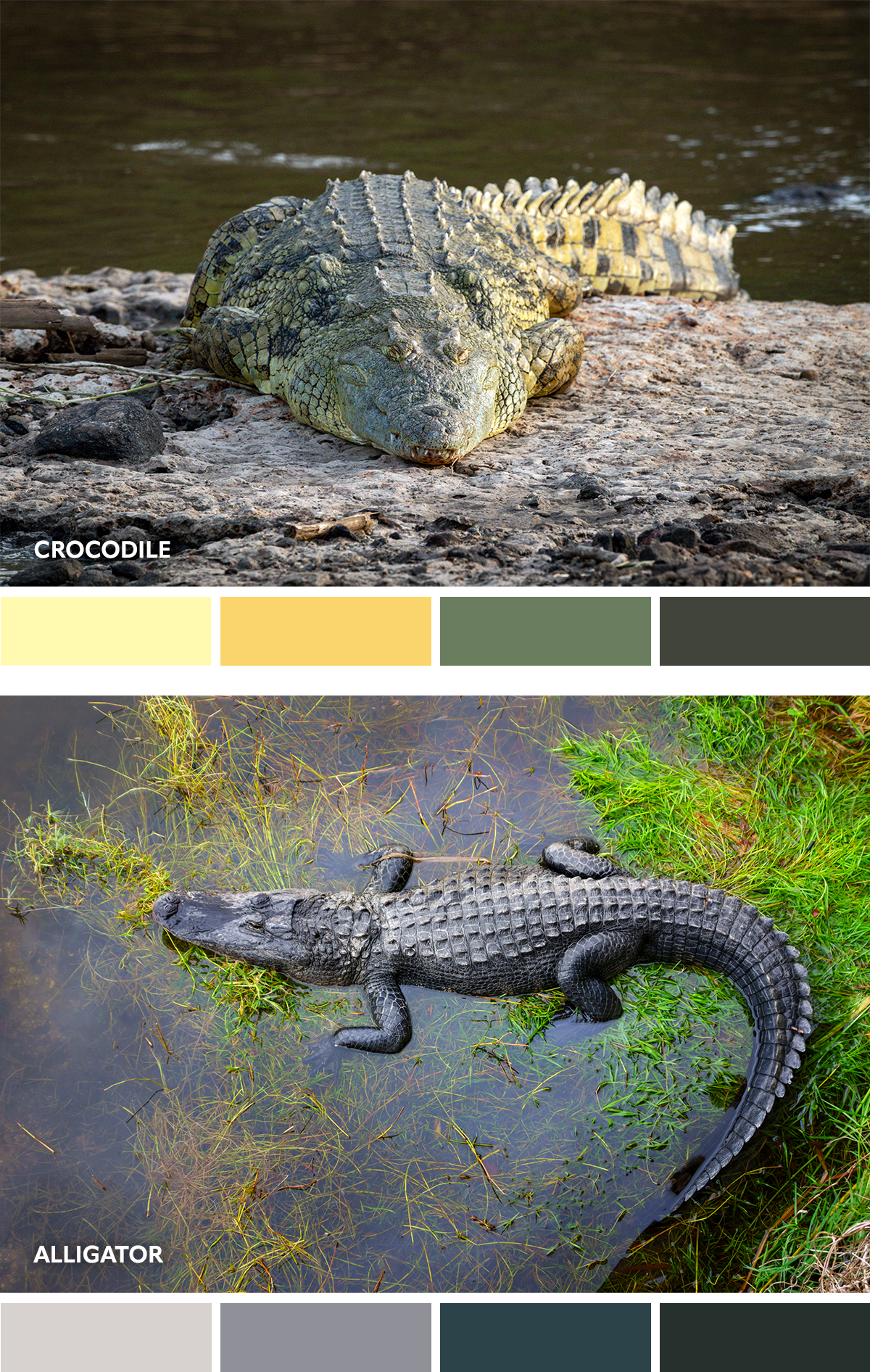 Nile crocodiles tend to be a grey-olive color. Alligators usually have dark green or black scales. In both cases, their colors help them blend into their surroundings while they hunt.
Nile crocodiles tend to be a grey-olive color. Alligators usually have dark green or black scales. In both cases, their colors help them blend into their surroundings while they hunt.
Size
On average, crocodiles are about 3 feet longer than alligators. Tanzania’s Nile crocodiles on average reach a length of 16 feet and weigh around 500 pounds. It’s possible to spot larger, heavier crocodiles, too!
Teeth
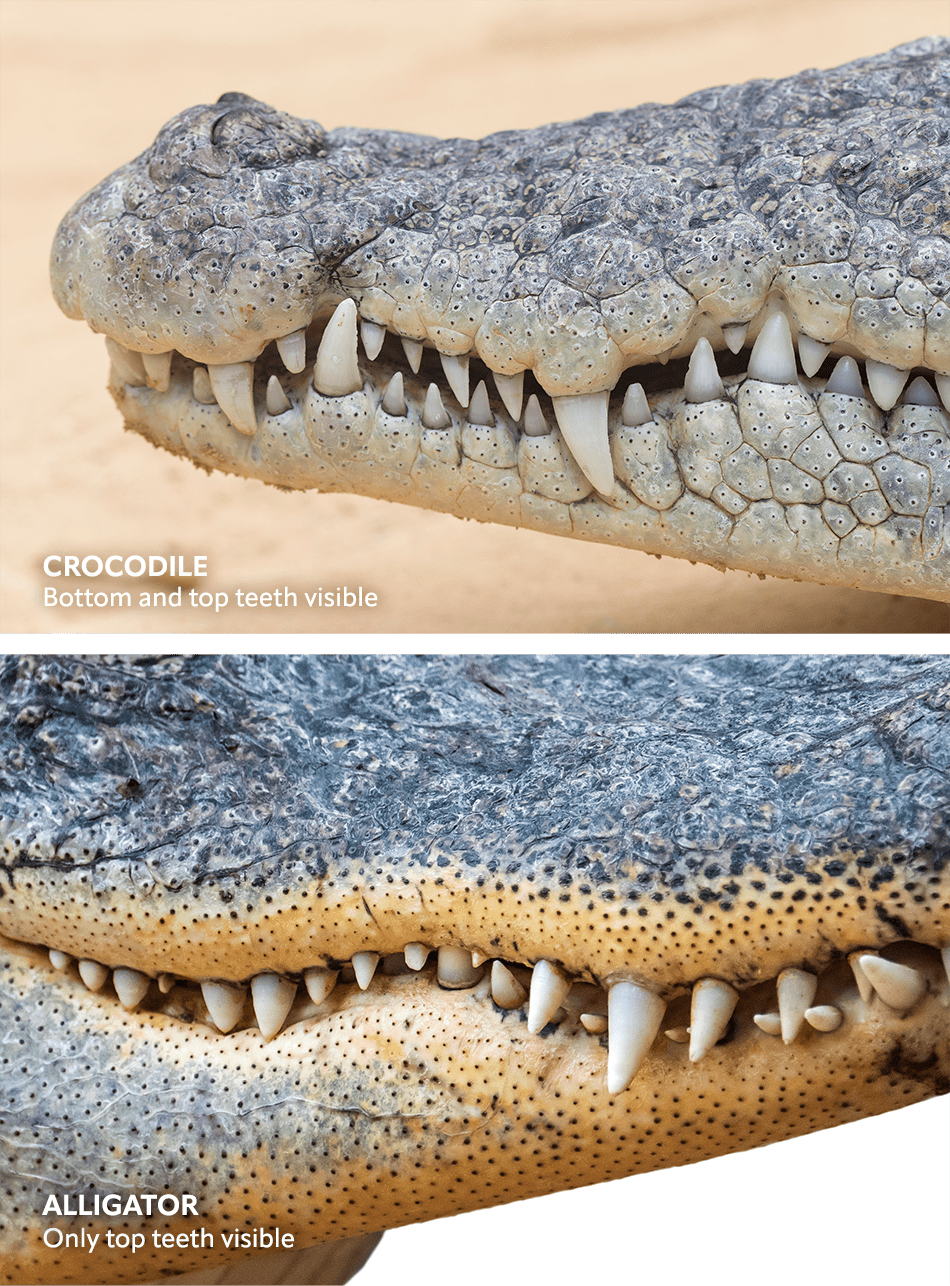
Crocodiles have five visible bottom teeth when their mouths are closed. Alligators only show teeth on the top of their mouths. We wouldn’t be thrilled to get too close to either!
Similarities Between Crocodiles and Alligators
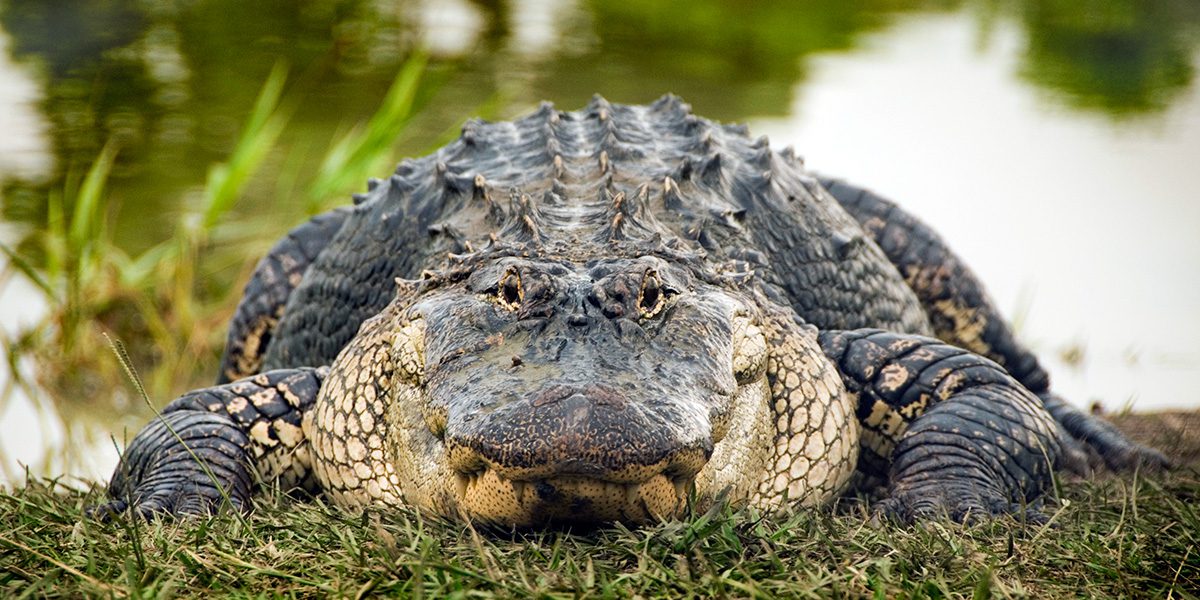
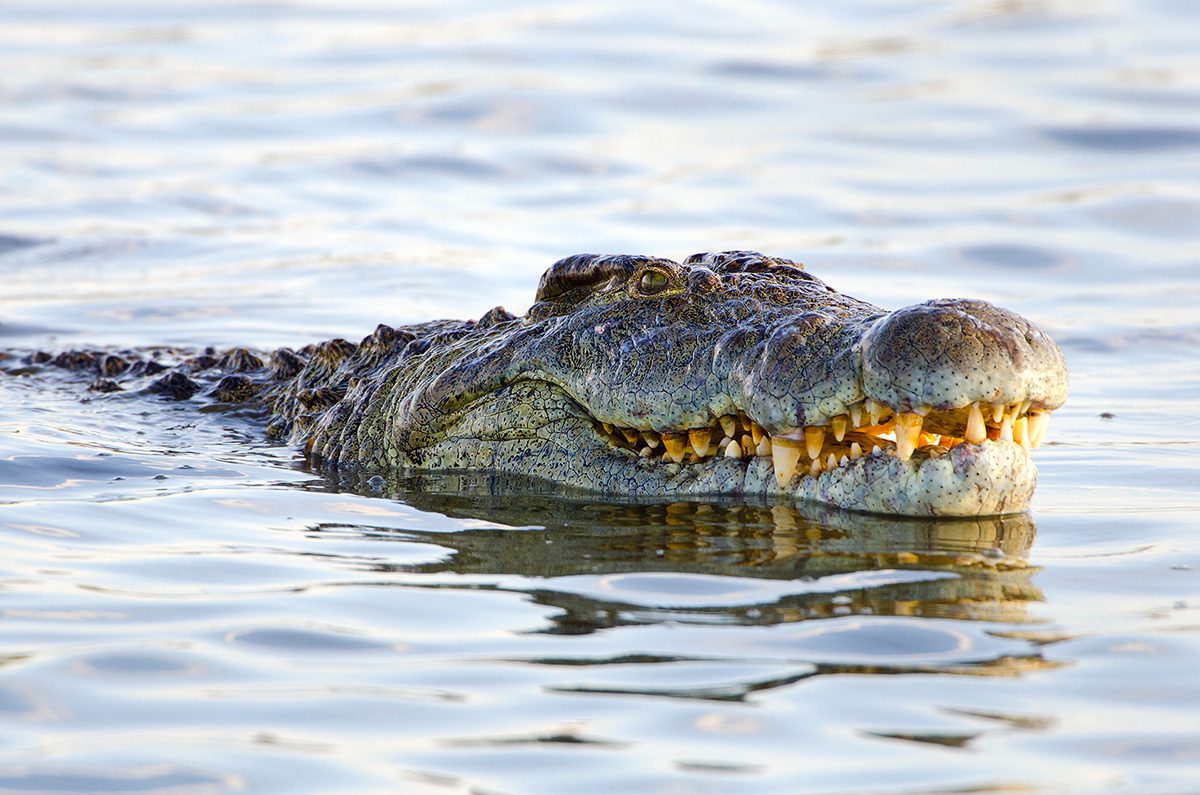
Are crocodiles and alligators cute? Not really. Cuddly? Maybe not. But they are are incredible, living snapshots of the ancient world. With teeth, scales and looks like theirs, no wonder they’ve stuck around.

